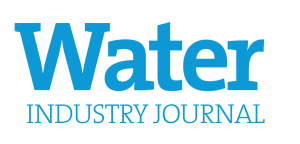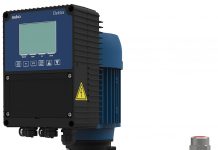Acoustic lead screening, while new, is based on a proven technology that can be easily used to help water companies protect the public from lead exposure and comply with tightening regulations. Given the serious health risks associated with lead exposure, finding a solution that is non-disruptive and delivers quick insights, will provide water companies with a viable solution to free communities of lead piping as quickly as possible whilst making large time and cost savings through the reduction of more invasive techniques.
How does acoustic lead screening work?
Two acoustic sensors are used to ‘bracket’ the portion of the supply line to be screened for lead, with one placed on the external stop tap and another sensor placed on the internal stop tap (sometimes referred to as stopcock or stop valve). In some cases, the second sensor can be placed outside a customer’s residence, such as on an external customer meter, eliminating the need for operators to enter the home. An acoustic signal is then sent through the pipe and recorded and analysed by Echologics’ PipeScreen™ Service Line Analyzer and the Sentryx™ Water Intelligence platform. Using automated algorithms to analyse multiple acoustic features, the software can screen the pipe material within minutes. The data is automatically uploaded to the Sentryx online platform, a cloud application that provides immediate access to the data from any connected device.
In action at Severn Trent Water
Severn Trent Water actively manages lead plumbosolvency and is very proactive when it comes to assisting customers with lead supply pipe replacement. It’s lead reduction scheme is part of the ‘Green Recovery Programme’, in which a key theme relates to removing lead from customer supply pipes. By March 2025, Severn Trent plans to replace the lead supply pipes of up to 25,000 customers in the Coventry area and up to 1,000 customers in the Bomere Heath areas, reducing the impacts of lead in their drinking water.
While Severn Trent knows where many of the lead supply pipes are located, these are customer owned and maintained so there are some locations where lead pipes may exist that Severn Trent do not have records for. Traditional examinations can sometimes mistake copper for lead and finding a good pipe when digging can be a disruptive mistake that water companies want to avoid. Before going ahead with a supply pipe replacement Severn Trent wants to be certain that it is a lead pipe so that lead pipe replacement funding goes where it is most needed.
The company has been actively seeking out innovative technologies to address this issue. In January 2022 it engaged in a research program with Echologics to trial the PipeScreen Service Line Analyzer that can non-invasively determine if a water service line contains lead. Over 40 service pipes were tested, each taking between 15 to 20 minutes. Severn Trent validated 72% of the pipes by excavation or potholing. The results of the comparison between PipeScreen results and validations were impressive with 0% false negatives, 0 % false positives and 2.5% inconclusive tests, accurately identifying the correct type of supply pipe material. The 2.5% inconclusive were characterised by the analyzer as mixed material and validations confirmed that there was a mix of lead and another material in the tested service line.
Richard Brant, Green Recovery Subject Matter Expert at Severn Trent, said, “Taking inventory on lead service pipes is challenging, especially in parts of the country where the majority of houses were built over 50 years ago. Acoustic lead supply pipe detection is a game changer in making it quick and easy for us to find these pipes with certainty.”








